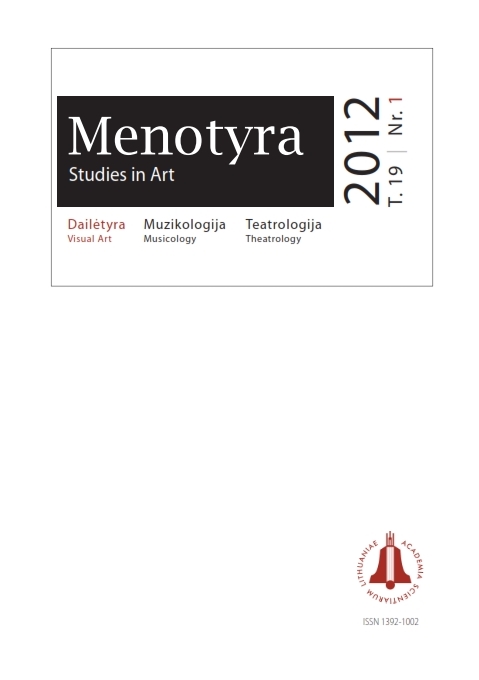Apie Gailestingojo Jėzaus paveikslą raudonosios ir rudosios okupacijų kryžkelėje
On the painting The Merciful Christ at the crossroads of Bolshevik and Nazi occupations
Author(s): Skirmantė Smilingytė-ŽeimienėSubject(s): Christian Theology and Religion, Visual Arts
Published by: Lietuvos mokslų akademijos leidykla
Keywords: the painting The Merciful Christ; Soviet and Nazi occupations; devotion; Lithuania; Vilnius
Summary/Abstract: The Church of Lithuania announced 2011 the year of the Mercy of God. All over Lithuania believers were encouraged to become open to divine mercy and to show human mercy. 2011 was the year when the painting The Merciful Christ (Divine Mercy image) painted in 1934 by artist Eugeniusz Kazimirowski after the visions of St. Faustina and held in the Sanctuary of the Mercy of God in Vilnius made a pilgrimage across Lithuania and to the Lithuanian diasporas abroad. The journey of the famous image began in the Vilnius Cathedral with the consecration of the copies of the painting. These copies made their way to the most remote parishes and were solemnly received, worshipped and became sites for prayer. We can assert that upon the end of the festive year the image of The Merciful Christ found in the original painting became generally established in Lithuania. Incidentally, due to active propaganda another image of The Merciful Christ, created in the years of World War II by Adolf Hyla and called Krakowian, gained spread in this country and in all Catholic countries. It should be noted that the way of Kazimirowski’s painting to Lithuanian believers was uneven and full of interruptions.The following stages of the cult of The Merciful Christ in Lithuania can conventionally be distinguished: non-public (first years of existence of the painting), upsurge (the 1940s, i. e. years under Soviet and Nazi occupations), subsiding (years of Soviet stagnation), revival (the 1980s, i. e. first decade of independent Lithuania), and thriving (current period).The contribution of Lithuanian historians and scholars of religious and art studies to the research of the cult of the Mercy of God and the painting famous for its graces is rather modest. The majority of publications repeat the data of research by Polish scholars, in particular Rev. Henryk Ciereszko, a biographer of Rev. Michał Sopoćko. The current paper is the first attempt to discuss the beginning of the spread of the painting itself and its cult in Lithuania and among Lithuanians. The iconog- raphy of the painting The Merciful Christ, its copies and remakes are analyzed in this paper. The first copies of Kazimirowski’s painting held in various churches of Lithuania (Karkaziškė, Kretinga, Vadžgirys, Vaiguva, Vilnius, and elsewhere) show that the Vilnius image enjoyed popularity in the first half of the 1940s, a dramatic decade for Lithuania. Quite often these copies, like the original, had to endure a nomadic fate in a later period. The authoress of the paper aims to establish the circumstances of worship of the famous image and legitimization of the cult of the Mercy of God in the first decade of existence of the painting. The first publications popularizing the painting and the piety to the Merciful Christ that came out in Lithuania are discussed in this paper, namely small booklets containing the famous image, its description, and the crown and novena of Mercy published in Vilnius and Kaunas in 1940-1942. These publications appeared both in Polish and Lithuanian languages. The booklets published in Lithuanian went through several editions. A closer look suggests that there might have been some counterfeits among them. The intensity of the new cult is also revealed by the devotional pictures that became widespread in the years of World War II, which are also discussed in the paper.
Journal: Menotyra
- Issue Year: 19/2012
- Issue No: 1
- Page Range: 62-75
- Page Count: 14
- Language: Lithuanian

